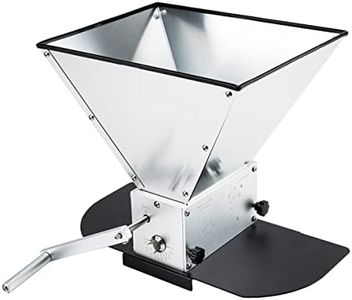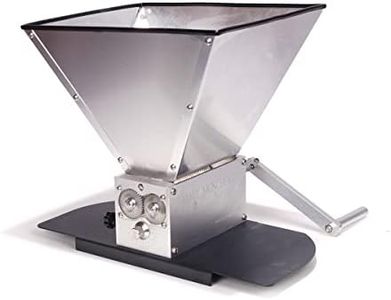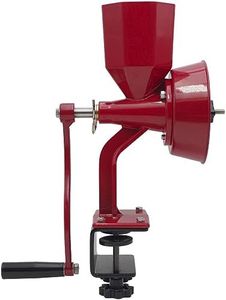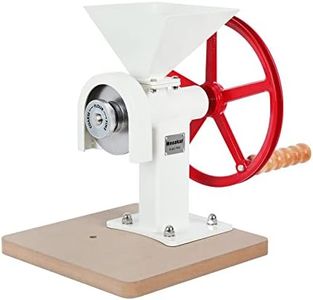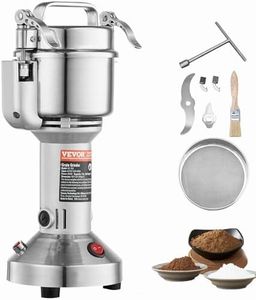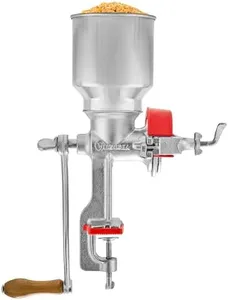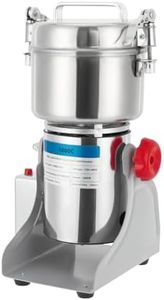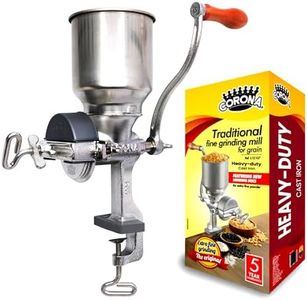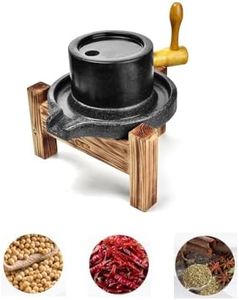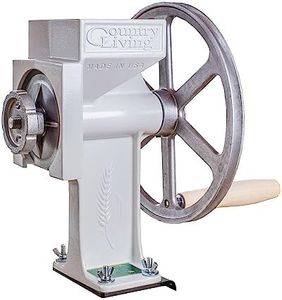We Use CookiesWe use cookies to enhance the security, performance,
functionality and for analytical and promotional activities. By continuing to browse this site you
are agreeing to our privacy policy
10 Best Grain Mills
From leading brands and best sellers available on the web.By clicking on a link to a third party's website, log data is shared with that third party.
Buying Guide for the Best Grain Mills
Choosing the right grain mill can make a big difference in your kitchen, especially if you want to grind your own fresh flour or other grains. The process can seem a bit overwhelming at first because there are several types and features to consider, but getting clear on your needs—like how often you’ll use it, what types of grains you want to process, and how much flour you want at a time—will help you quickly narrow down your options. As you compare models, pay close attention to key specifications that determine not only the machine’s performance but also how happy you will be using it day-to-day.Type (Manual vs. Electric)The type of grain mill refers to how it is powered: manual mills require you to turn a handle by hand, while electric mills use a motor. Manual mills are generally more compact and quiet, perfect if you want portability or if you have limited electricity access, but they do require physical effort and are slower in operation. Electric mills are much faster and easier to use, processing larger quantities of grain with minimal effort. When deciding between the two, consider how much physical effort you’re comfortable with, how often you plan to grind, and how much grain you want to process at a time—regular, high-volume use usually favors electric mills, while occasional or off-grid users might prefer manual.
Grinding Mechanism (Stone, Burr, or Impact)The grinding mechanism describes what the mill uses to crush or grind the grains—stone, steel burrs, or steel blades (impact). Stone and burr mills produce a more even flour and handle oily or fibrous grains well without overheating, suitable if you want versatile, high-quality flour. Impact mills use high-speed blades to pulverize the grain, making very fine flour quickly, though they tend to be noisier and less suitable for grains with high oil or moisture. Your choice depends on the types of grains you plan to use and the texture you prefer—stone and burr mills for traditional, bread-baking flour, and impact mills for quick, superfine flour from dry grains like wheat.
Grind Settings/AdjustabilityGrind settings indicate whether you can choose between coarse, medium, or fine flour. Some mills offer many settings, while others have just a few or even only one. The greater the adjustability, the more control you have over your flour texture, which is important if you want to use it for different purposes—like making bread, pastries, or even cracking grain for cereals. If you want flour that suits multiple recipes, select a mill with a range of settings; if you only want to bake bread, a model with limited options may suffice.
Capacity and Throughput SpeedCapacity involves both how much grain the mill can hold in its hopper and how much flour it can produce in a certain amount of time. If you need to produce large batches frequently or prepare flour for a big family, look for a mill with a larger hopper and higher throughput, meaning it grinds more pounds per minute. For smaller households or occasional use, a compact mill with a smaller capacity may be more convenient and easier to store. Match your choice to your typical batch size and kitchen storage space.
Ease of Cleaning and MaintenanceEase of cleaning is about how simple it is to take apart, clean out residue, and reassemble the mill. Mills with removable parts and basic construction tend to be easier to maintain, which is especially important if you use oily or gluten-free grains that can cause buildup. If you’ll be switching between different kinds of grains or using your mill frequently, look for one that makes cleaning straightforward—keeping your mill clean prolongs its life and ensures your flour stays fresh.
Noise LevelNoise level refers to how loud the mill is during operation, an important factor especially in open kitchens or shared spaces. Manual mills are generally quieter, while electric mills—especially impact types—can be quite loud. If noise is a concern for you or your household, pay attention to user reviews or the manufacturer’s information about sound; for quieter operation, look toward stone or burr mills, especially manual ones.
